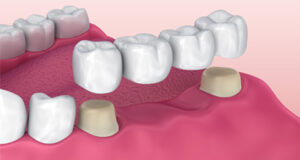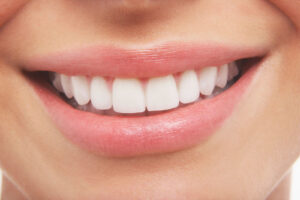CROWNS AND BRIDGES

In order to maintain your bright and beautiful smile, it is necessary to maintain your oral health with the help of a dental care expert who can provide various types of dental services. Crowns and bridges are among some of the services provided by the cosmetic dentists for this purpose.
INTRODUCTION TO DENTAL CROWNS
Dental crowns are the caps or covers that can be used for the restoration of damaged teeth. They give the teeth a normal size and shape and improve their look and strength. It can strengthen a tooth damaged for any reason that cannot be cured just by filling it. The crown seals the crack by holding it tight to avoid any further damage.
PLACEMENT OF A CROWN
A crown is placed on a damaged tooth in a way that the crown can easily fit on it. To fabricate the crown for a damaged tooth, its impression is casted and sent to the lab. Initially, a temporary crow is placed by the dentist until the permanent crown is fabricated in the lab.
NATURAL LOOK
A dental crown gives a natural look to the damaged tooth.It is fabricated according to the impression of your tooth is similar in size, color and shape of the original tooth.You can also consult with your dentist if you want to change the look of your damaged tooth through a crown.
HOW LONG DOES IT LAST?
A dental crown can last several years if prepared and fixed properly by a qualified and experienced dentist. The life of your dental crown also depends upon your oral hygiene practices.
AFTER CARE FOR YOUR DENTAL CROWN
You should avoid grinding your teeth or chewing hard foods like ice and other objects to avoid the fracturing or breakage of the dental crown. You should brush and floss your teeth along with the crowned teeth at least twice a day too. This will remove plaque from the joints of the teeth and gums, keeping them clean and avoiding decay and other dental problems.

STRUCTURE OF DENTAL BRIDGES
The structure of a dental bridge includes two crowns on either side of the false teeth that are joined together to fill the gap. These false teeth, along with the crowns, can be made of porcelain, gold, or alloys. These bridges require implants or the existing natural teeth to support them.
BENEFITS
Dental bridges can help in restoring your smile and ability to speak and chew food properly. They also help in replacing the missing teeth and maintaining the shape of your face properly, along with preventing the moving of the remaining teeth.
TYPES OF BRIDGES
Mainly three types of dental bridges are commonly used. They may include traditional bridges, cantilever bridges and Maryland bonded bridges. Any of these techniques can be used to fill the gap caused by missing teeth according to the condition of the patient
GETTING A DENTAL BRIDGE
At the first visit, the abutment teeth or anchoring teeth are prepared by removing the enameled portion of the existing teeth on the either sides of the gap so that the crowns can be fixed on them. Then, an impression of the crowns and the gap of missing teeth is taken to use in the lab as the model of the bridge.
It helps in preparing a temporary crown to protect the gums and exposed teeth as well as the permanent bridge. The permanent bridge is temporarily cemented after removing the temporary bridge to ensure its proper fitting, which is permanently cemented after few weeks.
